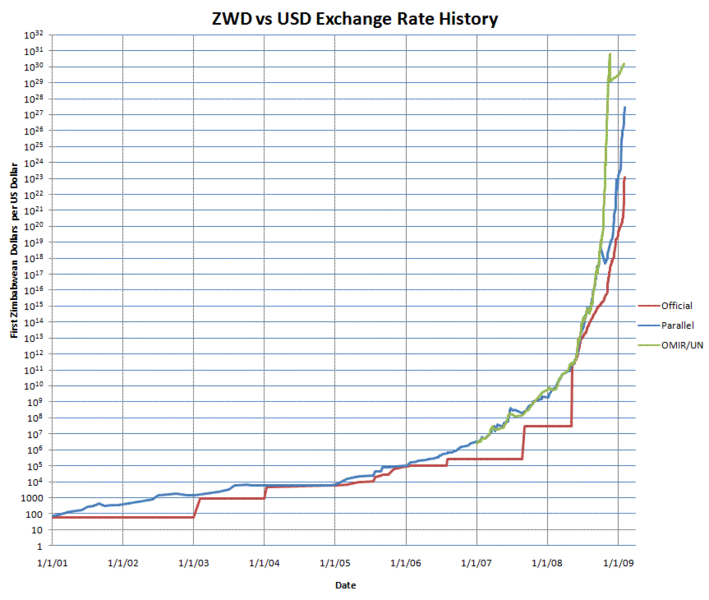In reference to my 2002 LRC article Extreme Prefixes, Stephen Fairfax sent me this guest post:
***
The CNN Bailout Tracker presently shows total commitments of 11 trillion dollars and total spending (not “investments”) of 2.8 trillion dollars. The Inspector General for the TARP program tallied total government exposure of 23.7 trillion dollars in a worst-case scenario.
In a world where there is already hyperinflation in the monetary base, just awaiting the proper moment for the fed’s dam to burst (or be deliberately breached) and bring on the full-fledged crack-up boom, I’ve been advising anyone who cares to listen to get comfortable with the SI prefixes, particularly the larger ones. Looking at all those zeros is hard, and a simple mistake in counting the number of zeros can lead to a 10x or even 1000x error.
I think most people have heard the term megabucks, it’s used as the name of several state lotteries.
Here’s how International System of Units (SI) prefixes can be applied to dollars:
1 megadollar = ten to the 6th power Federal Reserve Notes = $1,000,000
1 gigadollar = ten to the 9th power Federal Reserve Notes = $1,000,000,000
1 teradollar = ten to the 12th power Federal Reserve Notes = $1,000,000,000,000
1 petadollar = ten to the 15th power Federal Reserve Notes = $1,000,000,000,000,000
1 exadollar = ten to the 18th power Federal Reserve Notes = $1,000,000,000,000,000,000
1 zetadollar = ten to the 21st power Federal Reserve Notes = $1,000,000,000,000,000,000,000
1 yottadollar = ten to the 24st power Federal Reserve Notes = $1,000,000,000,000,000,000,000,000
See what I mean about reading those zeros?
 It wasn’t so long ago that a gigadollar was a lot of money even for free-spending congressmen. Now the government tosses around teradollar budgets, proposals, and deficit estimates daily. The global GDP, the total value of all goods and services produced on the planet in a year, is about 70 teradollars (PDF). How long before we see the first petadollar figure? The notional value of all derivatives presently comes closest, about 0.6 petadollars. (PDF)
It wasn’t so long ago that a gigadollar was a lot of money even for free-spending congressmen. Now the government tosses around teradollar budgets, proposals, and deficit estimates daily. The global GDP, the total value of all goods and services produced on the planet in a year, is about 70 teradollars (PDF). How long before we see the first petadollar figure? The notional value of all derivatives presently comes closest, about 0.6 petadollars. (PDF)
A yottadollar may seem unthinkable, but the Zimbabwe hyperinflation took their currency well past that point, as the accompanying image from the Wikipedia entry on the Zimbabwe dollar hyperinflation shows.
Mr. Kinsella’s article notes that the term xenna is unofficially used for ten to the 27th power, but to fully describe the Zimbabwe hyperinflation one needs a term for 10 to the 30th power, which is presently undefined. Shall we call them Bernadollars?
